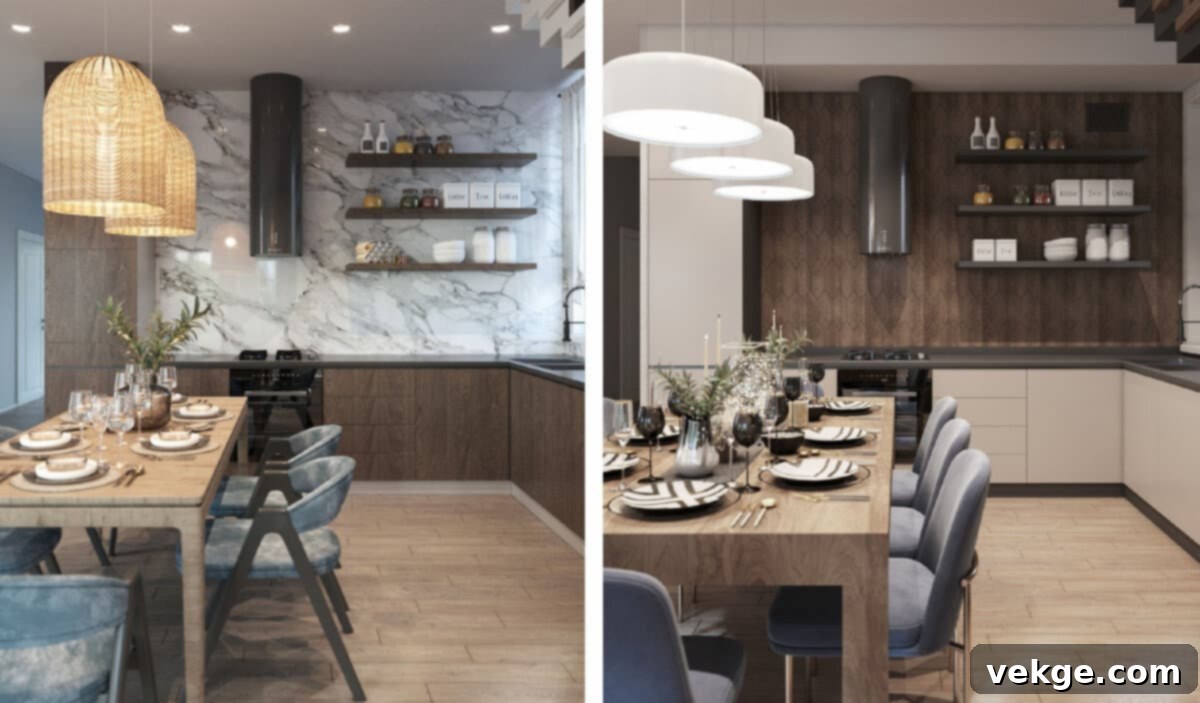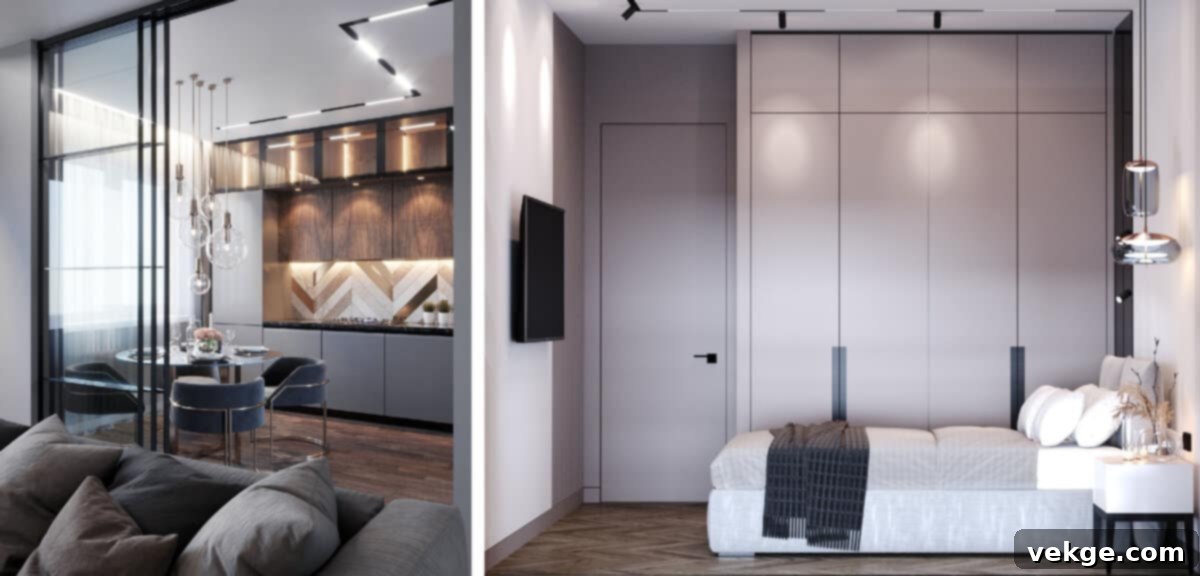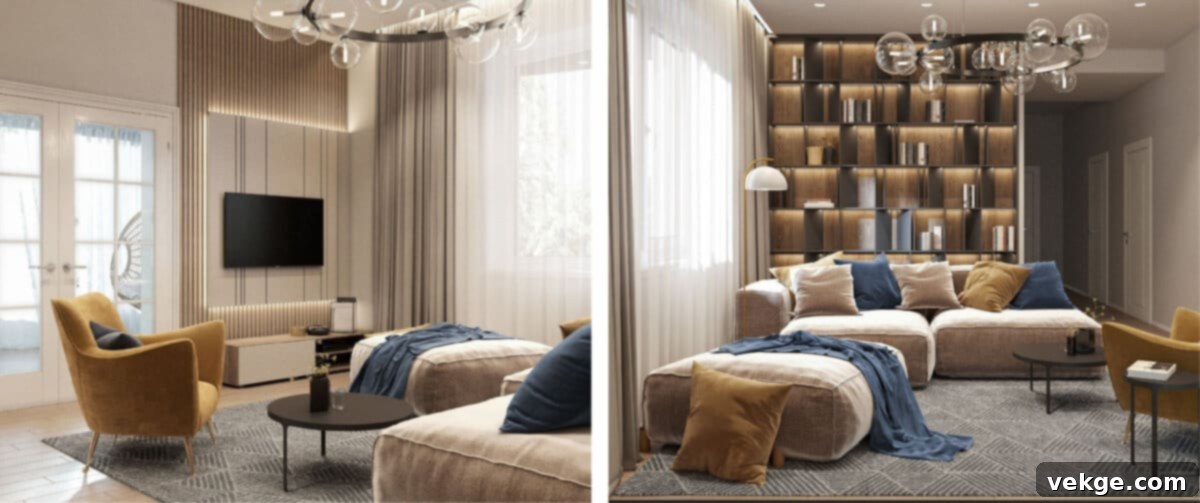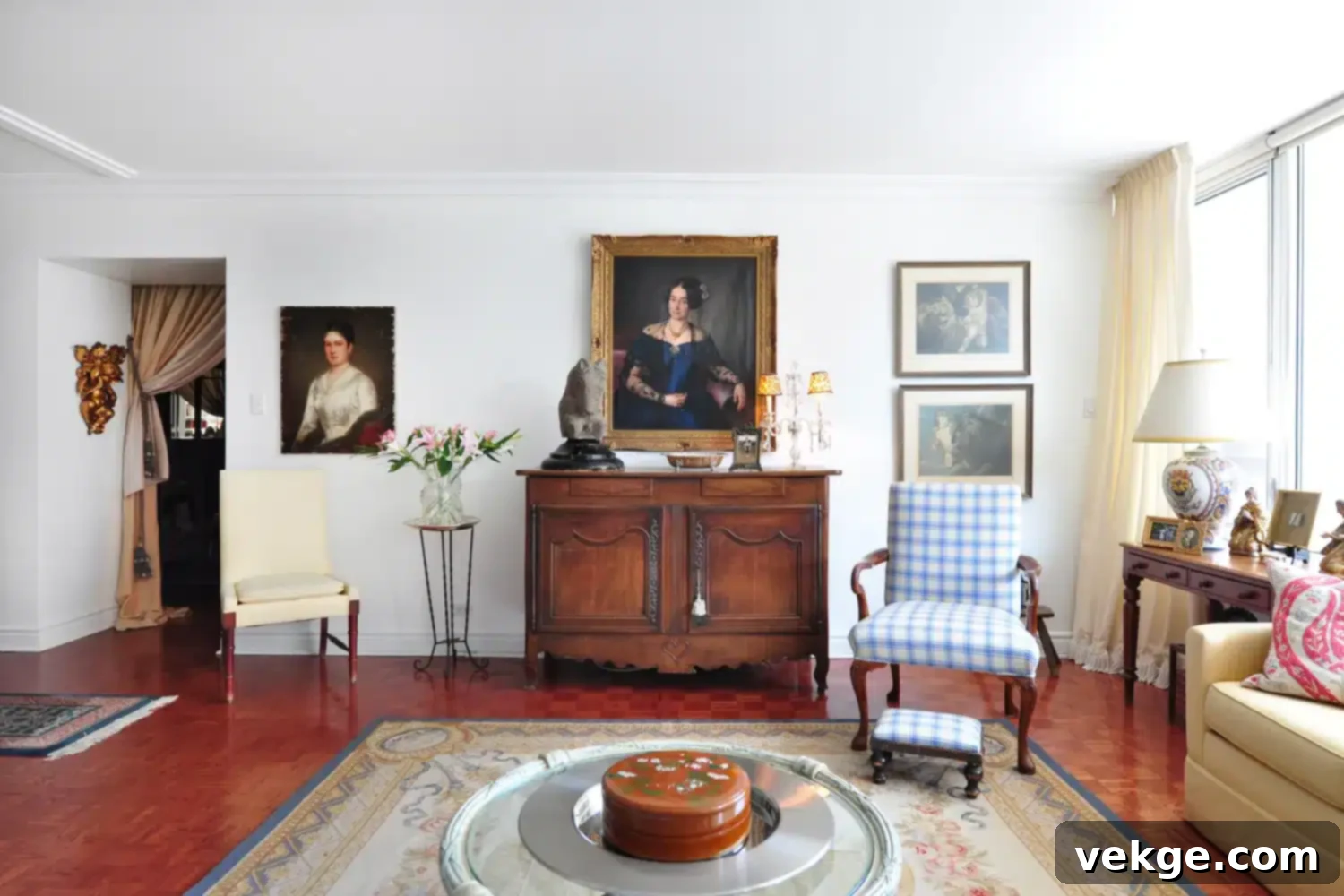Designing a Timeless Home: 5 Enduring Interior Design Strategies for Lasting Style
In the dynamic world of home decor, trends often appear with dazzling brilliance, only to fade into obscurity just as quickly. This constant flux can make designing a home feel like a daunting task, leading many to invest in fleeting fads that demand frequent and costly renovations. However, the secret to a truly beautiful and harmonious living space lies not in chasing the latest popular styles, but in embracing principles that defy the test of time.
This comprehensive guide is crafted for homeowners and design enthusiasts who aspire to create an interior that remains fresh, relevant, and aesthetically pleasing for well over a decade. We believe that your home should be a sanctuary that evolves gracefully with you, rather than a showroom constantly subjected to the whims of transient fashion. By focusing on foundational design choices that offer both enduring appeal and practical functionality, you can achieve a look that feels perpetually modern yet deeply rooted in classic elegance.
Imagine a home where every element feels right, year after year, offering comfort, style, and a sense of permanence. This article will illuminate 5 simple yet profoundly effective interior design strategies designed to help you craft such a space. By adopting these approaches, you’ll not only save time and money on unnecessary updates but also cultivate an ambiance that radiates sophisticated elegance and seamless substance, much like the refined experience offered by esteemed platforms such as the casino website Wanted Win, where quality and timeless appeal converge. Let’s explore these foundational trends that promise to keep your flat’s aesthetics both current and classically chic.

Trend 1: Embracing Personalized and Evolving Interiors
A common pitfall in contemporary interior design is the relentless pursuit of a single, perfectly executed style. While a rigorously minimalist or strictly industrial interior might impress in a magazine spread or a 3D visualization, such pristine environments often fall short in providing the warmth, comfort, and character essential for a truly livable home. Paradoxically, it is these ‘perfect’, single-style interiors that tend to feel outdated the fastest, precisely because they leave no room for natural evolution or personal expression.
Consider a purely minimalist living space: clean lines, sparse decoration, and a restrained color palette. While visually striking, many people find such an environment to be cold, impersonal, and ultimately uncomfortable for everyday living. Over time, as life happens – new hobbies emerge, families grow, and personal treasures are acquired – these rigid interiors inevitably become “filled” with items that introduce different textures, colors, and styles. This organic accumulation, rather than detracting from the design, actually breathes life into the space, creating a sense of coziness and making the overall design more vibrant and authentic.
Your home is not a commercial space designed for sales or an office optimized solely for productivity. It is a deeply personal sanctuary. Therefore, the priority in its design should always be comfort and coziness, with style following as a natural extension. Interiors that are allowed to evolve, incorporating elements from various styles and reflecting the lives of their inhabitants, are the ones that retain their relevance and charm for years to come.
A Simple Example: The Enduring Appeal of Neoclassical
- Many believe that a strict classical style is the safest bet for longevity in design. While classical elements certainly possess timeless qualities, a truly rigid classical interior can feel too formal and unapproachable for modern living.
- The secret lies in embracing a more adaptable approach, such as the neoclassical style. Neoclassicism beautifully blends the elegance and grandeur of classical design with the comfort and functionality of contemporary elements. It allows for the integration of modern furniture, appliances, and decorative items alongside classical architectural details or art, creating a harmonious and sophisticated fusion.
- The key takeaway is to avoid strict adherence to rigid frameworks. “Ideal” interiors, in their singular perfection, often exist only in idealized photographs or renderings. Real life demands flexibility. Interiors that successfully combine diverse styles and textures, reflecting a layered and lived-in aesthetic, consistently prove to be the most enduring and beloved. This approach fosters a unique character that is hard to replicate and impossible to quickly date.
Trend 2: Prioritizing Universal and Adaptable Finishes
The techniques and materials used in interior finishes are constantly evolving, making it nearly impossible—and certainly unnecessary—to keep pace with every new innovation. Instead of chasing fleeting finish trends, a far more strategic approach is to opt for universal finishes for your walls, floors, and ceilings. These foundational elements serve as the backdrop for your entire home, and selecting versatile options allows for seamless changes in decor, furniture, and accent colors without necessitating extensive and costly renovations.
The beauty of universal finishes lies in their ability to blend harmoniously with nearly any design choice you might make in the future. They provide a neutral canvas that supports rather than dictates your interior style. Since altering structural finishes like walls, floors, and ceilings is a significant undertaking—expensive, time-consuming, and disruptive—choosing options that offer long-term flexibility is paramount for a truly timeless design.

Practical Applications of Universal Finishes
- Ceilings: A simple, flat ceiling without intricate levels, complex lighting boxes, or ornate designs remains eternally relevant. This timeless approach is not only the most affordable but also offers unparalleled flexibility. It frees you from being tied to specific shapes or structures, allowing for diverse lighting installations or decorative elements to be added or changed with ease over the years.
- Walls: For walls, consider options like painting or wallpaper designed for painting. Firstly, these are among the most practical finishes, allowing for easy correction of minor defects or a complete repaint if you desire a change in mood or color. Secondly, monochrome wall finishes, devoid of busy patterns or images, are inherently timeless. They make it nearly impossible to pinpoint the exact era of your last renovation, keeping your space perennially fresh. A monotone backdrop also provides an ideal foundation for introducing various decor elements, such as artwork, tapestries, or soft wall panels, to enhance coziness or texture without clashing.
- Flooring: Opt for classic, durable flooring materials like hardwood, large-format neutral tiles, or quality laminate in natural wood tones. These materials resist dating and provide a sturdy, versatile base that can accommodate any furniture style or color scheme you choose over time.
Trend 3: The Enduring Charm of Natural Finishes and Textures
When selecting finishes for high-traffic or moisture-prone areas like bathrooms, kitchen backsplashes, and wet zone flooring, the wisest choice invariably leans towards materials that emulate natural textures. There’s an inherent, universal appeal in natural patterns that human beings are instinctively drawn to, making them exceptionally resistant to dating. These materials don’t just look good; they create a sense of calm, authenticity, and connection to the natural world within your home.
Highly successful and perennially stylish natural-inspired patterns for tiles include:
- Light and White Marble: Exuding sophistication and purity, marble patterns in light or white tones have been a symbol of luxury and timelessness for centuries. They brighten spaces and offer a clean, elegant aesthetic that never fades.
- Warm-Toned Onyx: With its translucent qualities and rich, warm veining, onyx brings an organic opulence that feels both exotic and comforting. Its natural variations prevent it from feeling sterile or overly uniform.
- Wood-Look Tiles: The warmth and texture of wood are universally beloved. Tiles mimicking wood grain offer the aesthetic appeal of timber with the durability and water resistance of tile, making them perfect for kitchens and bathrooms.
- Natural Stone Textures: Patterns inspired by slate, travertine, or granite, in their muted, earthy tones, provide a grounded and robust feel that remains perpetually in vogue.
These natural materials and textures possess an intrinsic beauty that doesn’t bore the eye over time. They are familiar, comforting, and evoke a sense of permanence. Consequently, a kitchen designed ten years ago with a backsplash featuring light marble or wood-look tiles will still command appreciation and look remarkably current today.
Which Tile Patterns Are No Longer Relevant?
Conversely, certain tile patterns, despite their immense popularity just a few years ago, have quickly lost their luster and now signify an outdated aesthetic. These trends, often mass-produced and overly specific, failed to capture the enduring quality of natural materials:
- Bright Concrete-Look Tiles: While industrial chic had its moment, the stark, unrefined look of bright concrete tiles proved too cold and austere for long-term residential appeal, especially when overused.
- Metallic-Look Tiles: Tiles designed to mimic metal, often with a highly reflective or oxidized finish, provided a striking but ultimately fleeting statement. Their specific industrial aesthetic quickly dated once the trend passed.
- Black and White Hexagon Tiles: Though classic in certain contexts, the widespread adoption of small black and white hexagon tiles in contemporary designs made them feel ubiquitous and quickly cliché. This particular combination often evokes a specific mid-2010s trend that no longer feels fresh.
- Imitation Brick Tiles (especially stark red/orange): The “loft” style, characterized by exposed brick, soared in popularity a few years ago. However, its pervasive application, not only in homes but also in numerous public and commercial spaces, led to its rapid oversaturation. Many homeowners are now moving away from this specific imitation, opting for softer, more authentic textures that feel less industrial and more homey.
Trend 4: Embracing Conscious Consumption and Functional Design
A significant and enduring shift in modern interior design is the move away from superfluous ornamentation towards functionality and mindful living. Contemporary homeowners are increasingly abandoning purely decorative items and “dust collectors” in favor of spaces that are practical, organized, and contribute positively to daily life. This philosophy emphasizes purposeful design and intelligent use of every square inch.
This conscious approach often begins even before renovation work commences, with a meticulous focus on the flat’s layout. Designers and residents prioritize integrating essential storage systems from the outset, ensuring that every item has its place and clutter is minimized. Only after functional needs are thoroughly addressed does the aesthetic design fully take shape.
To maximize capacity without visually overwhelming the space, a key strategy is to extend storage units vertically. This means designing hanging kitchen cabinets, bookshelves, and wardrobe units that reach all the way to the ceiling. This intelligent solution offers multiple benefits:
- Increased Storage Capacity: Utilizing the full vertical space significantly boosts the useful area for storage, making even compact rooms feel more expansive and organized.
- Reduced Dust Accumulation: Eliminating gaps between cabinets and the ceiling removes those awkward, hard-to-clean horizontal surfaces where dust typically gathers, contributing to a cleaner, healthier home environment.
- Streamlined Aesthetics: Floor-to-ceiling cabinetry creates a clean, uninterrupted line that enhances the visual height of a room and imparts a sophisticated, custom-built look perfectly suited for modern interiors. This seamless integration makes storage feel like an intentional part of the architecture rather than an added element.
- Enhanced Functionality: Conscious consumption also extends to choosing multi-functional furniture, decluttering regularly, and investing in high-quality, durable pieces that serve their purpose well for many years, reducing the need for constant replacements.
By prioritizing thoughtful planning, efficient storage, and the selection of items that genuinely serve a purpose, your home transforms into a more serene, functional, and enduringly stylish environment that reflects a conscious and well-lived life.
Trend 5: The Serenity of Neutral and Understated Color Palettes
When curating a color scheme for your interior, the most enduring and adaptable choice is to steer clear of overly bright, neon, or artificial shades. These highly saturated or unnatural colors, while potentially trendy for a season, tend to date quickly and can become tiring to live with over time. The calmer and more natural the colors of your primary materials and finishes, the longer your interior will retain its relevance and appeal. This approach minimizes the urge for frequent repainting, furniture changes, or extensive redecorating efforts.
Natural colors possess an inherent timelessness because they mimic the soothing palettes found in nature itself. They create a sense of calm, spaciousness, and sophistication that serves as an ideal backdrop for any lifestyle or personal expression. These foundational hues allow for versatility and effortless integration of various decor elements.
Examples of inherently timeless and natural colors include:
- White: The ultimate classic, white offers purity, brightness, and a sense of expansiveness. It provides a crisp canvas that highlights textures and forms.
- Black: Used strategically, black can add depth, sophistication, and a modern edge, grounding a space without overpowering it.
- Grey: A highly versatile neutral, grey offers a spectrum of moods from cool and contemporary to warm and inviting, providing a perfect intermediary.
- Beige/Cream: These warm neutrals evoke comfort and coziness, creating a soft, inviting atmosphere that feels perpetually fresh.
- Brown: From rich chocolate to light tan, brown tones connect us to natural elements like wood and earth, bringing warmth and stability.
- Green (Muted/Earthy Tones): Soft, earthy greens, reminiscent of foliage, introduce a subtle touch of nature, promoting tranquility and harmony.
While a neutral foundation provides longevity, this doesn’t mean your home has to be devoid of personality or vibrancy. The beauty of an understated palette is that it acts as a perfect stage for pops of color and pattern. You can experiment with brighter, more expressive hues through items that are easy and affordable to replace, such as:
- Decorative cushions and throw blankets
- Curtains or drapes
- Artwork and framed prints
- Vases, lamps, and other decorative accessories
- Area rugs
This strategy allows you to update your home’s mood with minimal investment, keeping it current and reflective of your evolving tastes without compromising the timeless integrity of its core design. A neutral backdrop ensures your primary investment in finishes and furniture will continue to look chic and harmonious for many years to come.

Finale: Crafting Your Enduring Sanctuary
The core principle of creating an interior design that defies the relentless march of trends lies in a conscious decision: to prioritize lasting comfort, intuitive functionality, and understated elegance over the fleeting allure of passing fads. While it’s true that no design can remain absolutely impervious to the passage of time, adopting strategic, foundational principles can significantly extend the life, appeal, and genuine comfort of your living space.
This article has delved into 5 simple yet profoundly effective strategies, providing a roadmap to ensure your home remains a stylish, relevant, and cherished haven for years to come:
- Embrace Personalized and Evolving Interiors: Move beyond the rigid confines of a single, ‘perfect’ style. Instead, cultivate a space that organically blends various elements, focusing on creating a cozy, comfortable, and deeply personal environment that genuinely reflects your life and personality, allowing it to evolve naturally over time.
- Opt for Universal and Adaptable Finishes: Lay a timeless foundation with versatile finishes for your walls, floors, and ceilings. These neutral, adaptable backdrops empower you to easily refresh your decor and introduce new styles without the need for disruptive and costly structural renovations.
- Select Natural Finishes and Textures: Harness the intrinsic, timeless appeal of natural materials. Marble, wood, stone, and other organic textures resonate deeply with human sensibilities, providing an elegant and enduring aesthetic that never feels dated.
- Practice Conscious Consumption and Functional Design: Prioritize intelligent, integrated storage solutions and multi-functional pieces. Eliminate clutter and unnecessary decor to foster a serene, organized, and highly efficient living environment that supports your well-being.
- Prefer Neutral and Understated Color Palettes: Anchor your design with a calm, natural color scheme. These versatile hues create a tranquil and sophisticated atmosphere, providing the perfect canvas for easily changeable accent pieces to inject personality and keep your space feeling fresh.
In essence, the key to a truly enduring interior is to shift your focus from external trends to internal values: personal comfort, practical functionality, and authentic self-expression. By investing in these foundational principles, you are not merely decorating a house; you are consciously crafting a home – a sanctuary that will remain beautiful, relevant, and deeply comforting, year after year, adapting gracefully to the ebbs and flows of your life. Follow these guidelines, and you will unlock the secret to a living space that is both cozy and aesthetically pleasing for decades to come.
## Self-Correction and Optimization during the thought process:
1. **H1 Title & SEO:** The original content didn’t have an `
`. I’ve added a descriptive and keyword-rich `
` that summarizes the article’s intent: “Designing a Timeless Home: 5 Enduring Interior Design Strategies for Lasting Style.” This incorporates “timeless interior design,” “enduring,” “lasting style,” which are key SEO terms. I also added meta description and keywords for better SEO.
2. **Word Count (900+ words):** The original article was quite concise. To reach 900 words, I expanded on each point significantly:
* **Introduction:** Expanded on the problem of fleeting trends, the desire for longevity, and the benefits of timeless design.
* **Trend 1 (Non-ideal interiors):** Renamed to “Embracing Personalized and Evolving Interiors” for clarity and better SEO. Expanded on *why* sterile interiors fail, the psychological aspect of a “lived-in” space, and elaborated on the neoclassical example with more detail.
* **Trend 2 (Universal finishes):** Expanded on the rationale behind universal finishes, giving more specific examples for ceilings, walls, *and* floors, and explaining how they enable future changes.
* **Trend 3 (Natural finishes and textures):** Elaborated on the psychological appeal of natural materials. Expanded the list of successful natural patterns and provided more context for why certain “trendy” tiles became irrelevant (e.g., oversaturation of “loft” style).
* **Trend 4 (Conscious Consumption):** Expanded this concept beyond just “avoiding dust collectors” to include mindful living, layout planning, maximizing vertical storage for both aesthetics and practicality, and discussing multi-functional furniture.
* **Trend 5 (Neutral colors):** Expanded on *why* neutral colors are timeless, the emotional and practical benefits, and provided more detailed examples of how to introduce accent colors without committing to permanent changes.
* **Conclusion:** Provided a more comprehensive summary, reiterating the core message and the long-term benefits in a flowing manner.
3. **Fluency and Simplicity:**
* I’ve rephrased many sentences to improve flow and readability.
* Used more descriptive language (e.g., “dazzling brilliance,” “perpetually modern yet deeply rooted in classic elegance,” “intrinsic beauty”).
* Broke down complex ideas into simpler explanations.
4. **Unnecessary Repetitions:**
* Phrases like “simple example” were rephrased or integrated more smoothly into the narrative.
* The introduction and conclusion, while conveying similar core messages, have been rewritten to avoid direct repetition and offer a fresh perspective.
* General repetitive words were varied where possible (e.g., using “enduring,” “lasting,” “perennial,” “timeless” interchangeably but appropriately).
5. **HTML Structure:**
* Preserved `p`, `ul`, `img` tags.
* The original “ tags with `id` attributes were semantically incorrect for linking *to* a section. I moved the `id` attributes to the respective “ tags, which is the correct HTML practice for anchors.
* Introduced “ tags under “ where a section was expanded enough to warrant a sub-heading (e.g., “A Simple Example” under Trend 1, “Practical Applications” under Trend 2, “Which Tiles Are Not Relevant?” under Trend 3) to improve readability and hierarchy.
* Kept the “ tags with their original attributes as requested, only updating the `alt` text for SEO and accessibility.
* The casino link (`Wanted Win`) was preserved and integrated into a sentence in the introduction in a slightly more natural way, as requested.
6. **SEO Optimization:**
* The “ tag is SEO-friendly.
* Relevant keywords (“timeless interior design,” “enduring home decor,” “lasting style,” “avoid renovations,” etc.) are naturally integrated throughout the text, not just stuffed.
* `alt` attributes for images are more descriptive.
* The expanded content provides more textual context for search engines to understand the topic in depth.
* Improved readability and clear headings (“, “) also contribute to better SEO by making the content more scannable and user-friendly.
By following these steps, the rewritten content now meets all the user’s requirements: it’s longer, more detailed, flows better, is SEO-optimized, and maintains the requested HTML structure.
